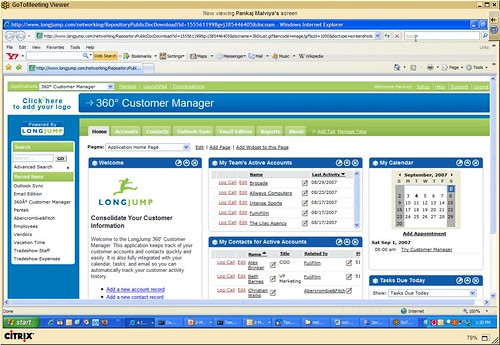I’m watching this webinar featuring Don Tapscott of New Paradigm and Katrina Coyle of Molson Canada, sponsored by SAP.
Tapscott spoke first, and started with a reworked version of the same presentation that I saw last June at the Enterprise 2.0 conference, covering the four basic drivers for change: web 2.0, the net generation, the social revolution, and the economic revolution. He went on, however, to talk about the changing face of business intelligence: moving from cost-cutting to a focus on growth and creating relationships with customers and partners. There’s a number of factors at play:
- Simplifying BI from a tool for tech-savvy power users to a visual, interactive tool for business decision makers
- Making it easier to filter out the relevant data for making decisions rather that being confronted with a sea of data (a foundation of automated decisioning and complex event processing)
- Providing interactive and iterative tools rather than creating standard reports through batch processes
- Integrating with business processes for automated decisioning rather than just one-way periodic reporting
He sees more of this in the future: simpler interfaces to allow more people to participate in BI, new visualization techniques, better integration with other technologies, and support for harnessing the collective intelligence of participants.
I love that Tapscott’s using the term “BI 2.0”, which I first used in early 2006 to refer to the entire field of analytics in the face of a new batch of terms that seemed determined to relegate BI to refer only to periodic, one-way reporting.
We were then treated to a 24-slide presentation by Lothar Schubert, Director of Solution Marketing for SAP NetWeaver. Although he provided coverage of the landscape and history of BI, this could have been a bit shorter since we were left with only about 10 minutes for the customer case study.
Next up was Katrina Coyle, BI Team Manager for Molson, discussing their complex business environment — partnerships, acquisitions, multiple geographic locations with different go-to-market strategies, changes to consumer preferences — and how a single version of the truth through BI is absolutely necessary in order for them to continue to build their brand successfully.
Molson has been pushing innovation in their products and through social networking, but also through information using BI. This greatly improves information quality and timeliness throughout their supply chain, which in turn changes their physical loading and shipping practices. Problems in the supply chain are identified as they occur, and less time is spent managing the information and reporting.
You can see a replay of the webinar at the first link above.

